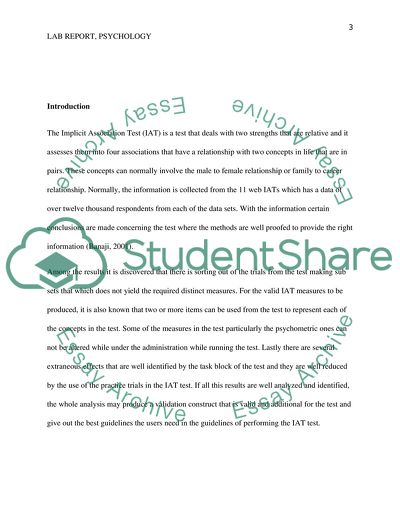Cite this document
(Implicit Application Test Methodology at Examining Age Stereotyping in Lab Report Example | Topics and Well Written Essays - 2250 words, n.d.)
Implicit Application Test Methodology at Examining Age Stereotyping in Lab Report Example | Topics and Well Written Essays - 2250 words. https://studentshare.org/psychology/1836169-the-implicit-association-test-iat-methodology-aimed-at-examining-age-stereotyping-in-students
Implicit Application Test Methodology at Examining Age Stereotyping in Lab Report Example | Topics and Well Written Essays - 2250 words. https://studentshare.org/psychology/1836169-the-implicit-association-test-iat-methodology-aimed-at-examining-age-stereotyping-in-students
(Implicit Application Test Methodology at Examining Age Stereotyping in Lab Report Example | Topics and Well Written Essays - 2250 Words)
Implicit Application Test Methodology at Examining Age Stereotyping in Lab Report Example | Topics and Well Written Essays - 2250 Words. https://studentshare.org/psychology/1836169-the-implicit-association-test-iat-methodology-aimed-at-examining-age-stereotyping-in-students.
Implicit Application Test Methodology at Examining Age Stereotyping in Lab Report Example | Topics and Well Written Essays - 2250 Words. https://studentshare.org/psychology/1836169-the-implicit-association-test-iat-methodology-aimed-at-examining-age-stereotyping-in-students.
“Implicit Application Test Methodology at Examining Age Stereotyping in Lab Report Example | Topics and Well Written Essays - 2250 Words”. https://studentshare.org/psychology/1836169-the-implicit-association-test-iat-methodology-aimed-at-examining-age-stereotyping-in-students.


